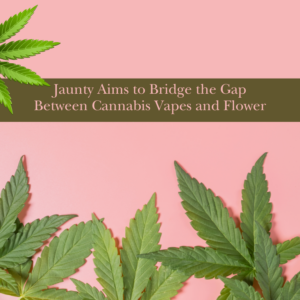Less Plant Management with Shorter Cycle and Apical Dominance

Optimizing Efficiency in Cannabis Production: A New Approach for Higher Yields with Fewer Resources
As the medicinal cannabis industry continues to professionalize, licensed producers are under increasing pressure to optimize efficiency. The goal is clear: to produce more flowers per square meter (kg/m²) annually while using fewer resources, all without sacrificing product quality. By rethinking cultivation practices, particularly during the vegetative phase, cannabis growers can significantly boost their yields while reducing inputs, making their operations more sustainable and competitive.
Shifting Focus: Yield per Square Meter, Not Yield per Plant
Rene Corsten, a crop consultant at Delphy and a member of the Medical Cannabis Platform for Innovation and Research (MCPIR), believes that cannabis producers should rethink how they measure success. “The aim is simple: to produce more flowers with the same or fewer inputs,” says Corsten. He explains that by focusing on annual yield per square meter instead of yield per plant, growers can maximize production without needing to expand their facilities physically.
Corsten outlines the key to this approach: “By accelerating the crop cycle, growers can increase total production. A typical cannabis growing cycle involves a vegetative phase lasting 2 to 4 weeks, but this can be shortened to just 4 to 6 days. By doing so, growers can complete almost six crop cycles per year, as opposed to the usual four.”
Accelerating the Crop Cycle for More Efficient Production
Reducing the vegetative phase shortens the overall crop cycle by up to three weeks, allowing for more frequent harvests. “Rather than 12- to 13-week cycles, growers can achieve nine-week cycles. This results in nearly six crop cycles per year, increasing annual output by as much as 30%,” Corsten explains. The accelerated approach not only increases production but also reduces operational costs and risks.
One of the main advantages of this shortened cycle is the reduced need for labor-intensive plant management tasks such as pinching, de-leafing, and shoot selection. “By promoting apical dominance—where the main stem grows stronger and taller—growers can significantly reduce the time spent managing plants,” says Corsten. This labor savings translates to lower costs per kilogram of flowers.
Minimizing Risk: Pest and Disease Control
A shorter crop cycle also minimizes the risks associated with longer growing periods, such as pest infestations and disease outbreaks. “The longer a crop grows, the more susceptible it becomes to pest pressure and product degradation,” Corsten warns. “By shortening the cycle, growers reduce the likelihood of these issues, which in turn supports better product uniformity and quality.”
Uniformity is a critical factor as cannabis growers look to automate and mechanize their operations to scale up. A consistent product helps ensure that automation processes run smoothly, ultimately leading to increased operational efficiency.
Energy Savings and Environmental Impact
Another significant benefit of an accelerated vegetative phase is the reduction in energy consumption. “Shortening the vegetative phase means less time under grow lights, which leads to energy savings of up to 40%,” says Corsten. This not only decreases production costs but also reduces the facility’s carbon footprint—an increasingly important consideration in today’s environmentally conscious market.
With energy use being one of the largest operational costs for indoor cannabis cultivation, reducing electricity consumption provides an immediate positive impact on a grower’s bottom line, making operations more sustainable and profitable in the long term.
Tailoring the Approach to Specific Systems
While the benefits of this high-density, short-cycle approach are clear, Corsten acknowledges that not all cannabis cultivation systems are the same. “Cannabis production is less standardized compared to other crops like tomatoes or ornamental flowers. Every grower works with a unique system, and some are more suited to this approach than others,” he explains.
Corsten emphasizes that growers need to craft a tailored approach for their specific facility. “Strategic planning and careful implementation are essential. By aligning the shortened vegetative phase with the right growing conditions, licensed cannabis growers can dramatically increase their yield per square meter, ensuring their competitiveness in a rapidly evolving market.”
Collaboration to Propel the Cannabis Sector Forward
The team at the Medical Cannabis Platform for Innovation and Research (MCPIR) sees collaboration as a vital aspect of pushing the boundaries of cannabis production. Comprised of 13 companies with complementary expertise, MCPIR is focused on developing innovative solutions for the cannabis sector, drawing from knowledge gained in other high-tech agricultural crops.
Corsten and his colleagues at MCPIR are eager to test this accelerated crop cycle approach in practice. “As part of our mission to develop a blueprint for optimal cannabis production, we will soon begin testing this approach to see how far we can push the boundaries,” he says. The results of these trials could revolutionize how cannabis is grown, making the industry more efficient, sustainable, and profitable.
The Path to Scaling Up: Safeguarding Competitiveness
The professionalization of the medicinal cannabis industry means that growers must constantly innovate to stay ahead. By adopting this high-density, short-cycle approach, cannabis producers can increase their annual yields by up to 30% while reducing their inputs. This not only enhances their profitability but also positions them for future growth in a competitive market.
Corsten believes that by embracing these strategies, cannabis growers will safeguard their future competitiveness and ensure they can scale up to meet increasing demand. As the industry continues to evolve, those who optimize efficiency and adopt innovative approaches will be best placed for long-term success.
Efficiency as the Key to Success
In the rapidly evolving medicinal cannabis industry, efficiency is more important than ever. By shortening the vegetative phase and focusing on yield per square meter, licensed producers can achieve significant gains in production without compromising quality. This shift in strategy, combined with reduced labor costs, energy savings, and minimized risks, creates a more sustainable and profitable model for cannabis cultivation.
As growers continue to professionalize and scale up, those who adopt innovative approaches like the one outlined by Rene Corsten and MCPIR will be well-positioned to lead the industry into the future. With collaboration and knowledge-sharing across the sector, the potential for even greater advances in cannabis production is within reach.











